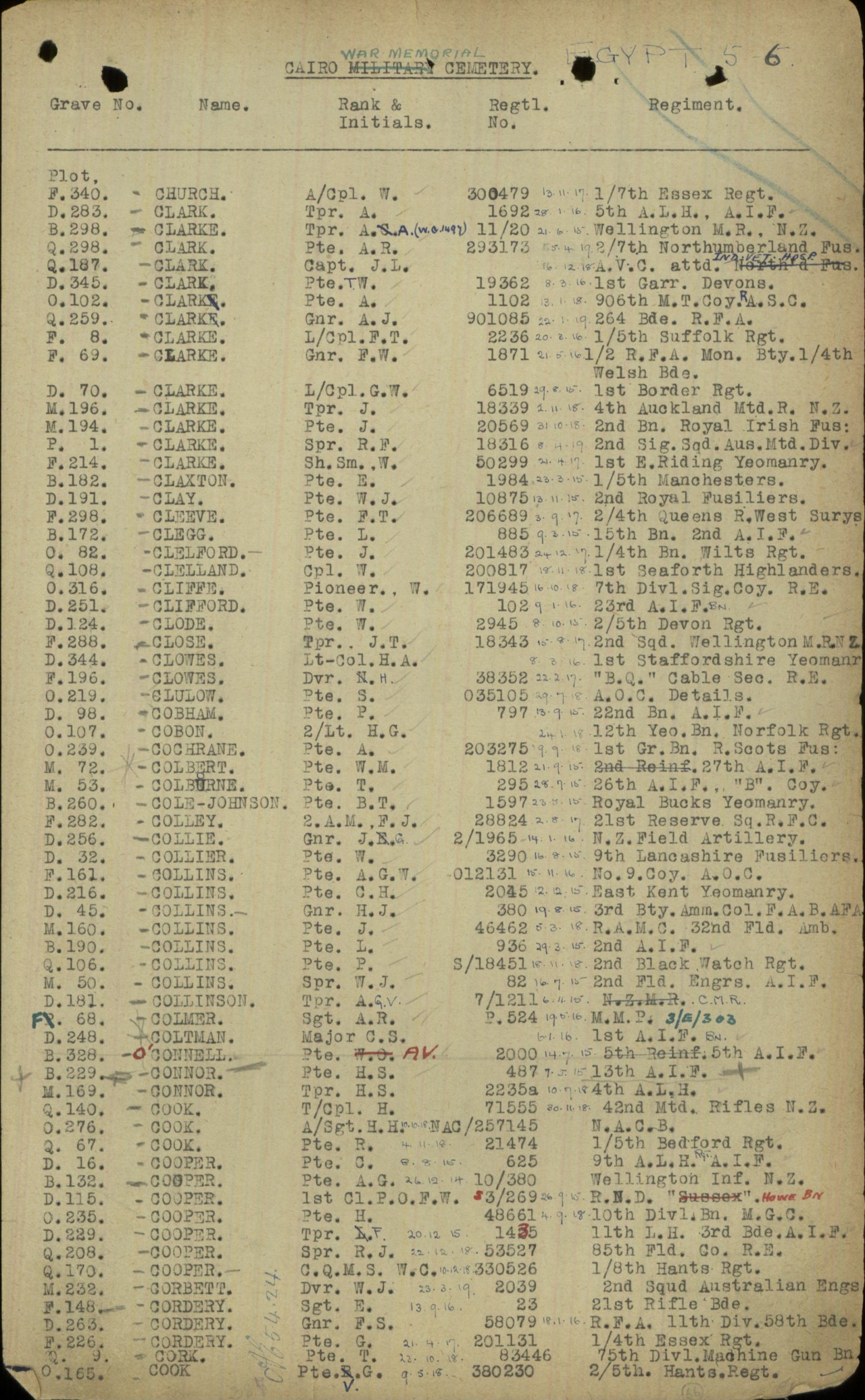Frederick Thomas Clarke
Rank: Lance Corporal
Service Number: 2236
Date of Birth: 1882
Regiment: A Coy, 1/5th Suffolk Regiment
Date of Death: 19 Mar 1916
Age at death: 23
Cemetery / Memorial: Cairo War Memorial Cemetery
Country: Egypt
Grave / Reference: F.8.
Relatives: Son of Thomas and Jane Clarke
Address: 28 Bridge Street, Hadleigh
The whereabouts of Frederick 's Medals are not known, however, he was entitled to the above three medals.
Frederick was born in Hadleigh in 1893. The 1911 Census report him living at home with his parents, Thomas and Jane at 28 Bridge Street, Hadleigh. Also at home was his siblings; Helen (20), Arthur (15), Lilian (5), Ivy (3) and new born Jessie. In 1911 he was 18 and working as a furniture warehouse worker. We are not exactly sure when he enlisted into the army, although his regimental number suggests that he probably joined at the outbreak of war. Like many other young men from Hadleigh, Frederick joined the local territorial battalion, the 5th Battalion the Suffolk Regiment and we know that the regiment was mobilised on the night of the 4th/5th August 1914.
Once mobilised the 1st/5th Suffolks spent a number of months carrying out home service tasks. At that time territorial units were liable for home service only and were not required to deploy overseas. However, when it became apparent that more troops would be needed for overseas service, the men of the battalion were asked to volunteer. After giving this some serious thought, 72% of the men volunteered and the battalion was redesigned 1st/5th Suffolk Regiment. Those who opted to stay on home service duties only, became the 2nd/5th Suffolks.
William Dunnett's Medal Card
The 1st/5th Suffolks completed their training and preparation and were re-equipped for service in the eastern theatre. They embarked along with the rest of 163 Brigade and the 54 Eastern Division at the end of July from Liverpool bound for Gallipoli. They arrived and went ashore at Suvla Bay on 10th August 1915 and were quickly moved forward and by midday on the 12th were manning the forward trenches on the Anafarta Plain.
Landing beach at Suvla Bay
They sniped the Suffolks who could not see the firing points and even if they could, they had no artillery support to combat the snipers. In addition, the Turks made best use of their own artillery which ultimately halted the brigades advance. The Suffolks fell back to a shallow river bed / ditch where they formed the new front line. A few days later they were relieved and returned to the reserve trenches where they discovered that the attack had cost them dearly; 11 Officers and 178 Other Ranks were killed, wounded or missing. Although official records suggest that many of the Suffolks went missing on or after the 21st Aug, we now believe that they were actually lost during the advance on the 12th.
On that day, at least 16 men from Hadleigh were killed. Due to the nature of the fighting, their bodies were never recovered from the battlefield until the early 1920s. Frederick survived this initial battle and went on to endure some of the harshest conditions possible. Life in the trenches was a struggle under almost constant enemy fire. In the blazing heat of the summer, thirst was always a problem and with bodies left out in the open and the severe lack of sanitary conditions, disease was rife. As the year went on the weather changed and the days got much colder adding to the misery. By the end of the year, the British government had accepted that the Gallipoli campaign had been a failure and ordered the withdrawal.
At 4pm they were ordered forward as part of a 163 Brigade operation to clear the Plain of snipers in preparation for a much larger Divisional operation that was planned for the following day. The battalion was on the left of the brigade line and 'A' Company made up of Hadleigh men were in the first wave. There was at least 75 Hadleigh men involved and this was a true baptism of fire. They were told it would be a straight forward advance to mop up the odd sniper, but in reality they faced a determined and ruthless enemy. The enemies intimate knowledge of the ground was key.
AMZAK cemetery
By March, some three months after being evacuated the Suffolks found themselves enjoying better conditions in Egypt where they were able to recover. For some however the effects lingered on. Frederick sadly died of disease while in an Egyptian hospital. He was buried in the Cairo War Memorial Cemetery.
Frederick's Medal Index Card shown above indicates that he was a Private, although at the time of his death he was a Lance Corporal. We are not sure exactly when he was promoted.
















